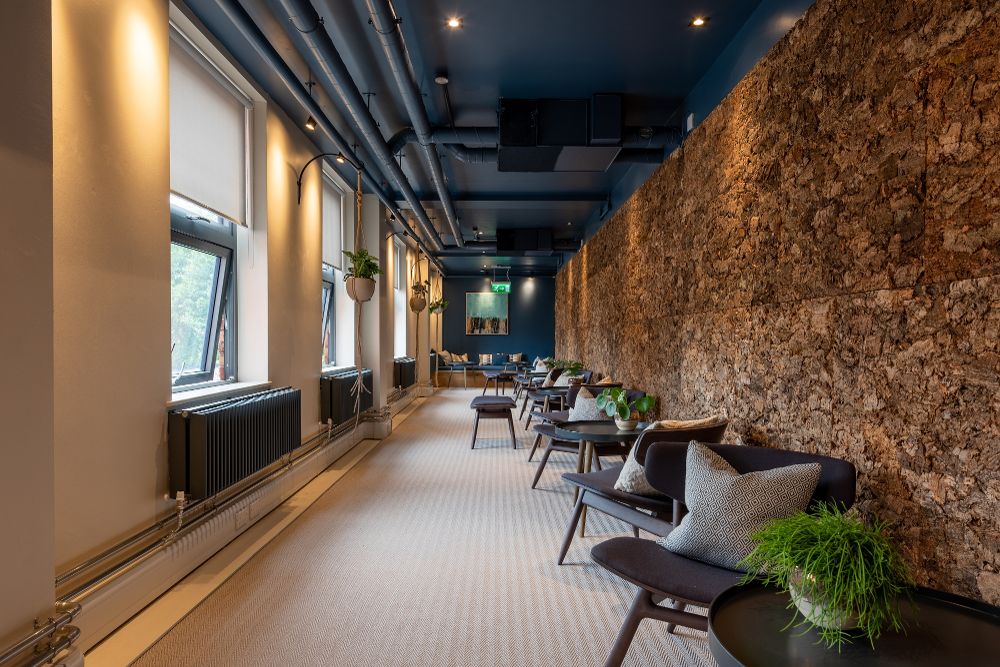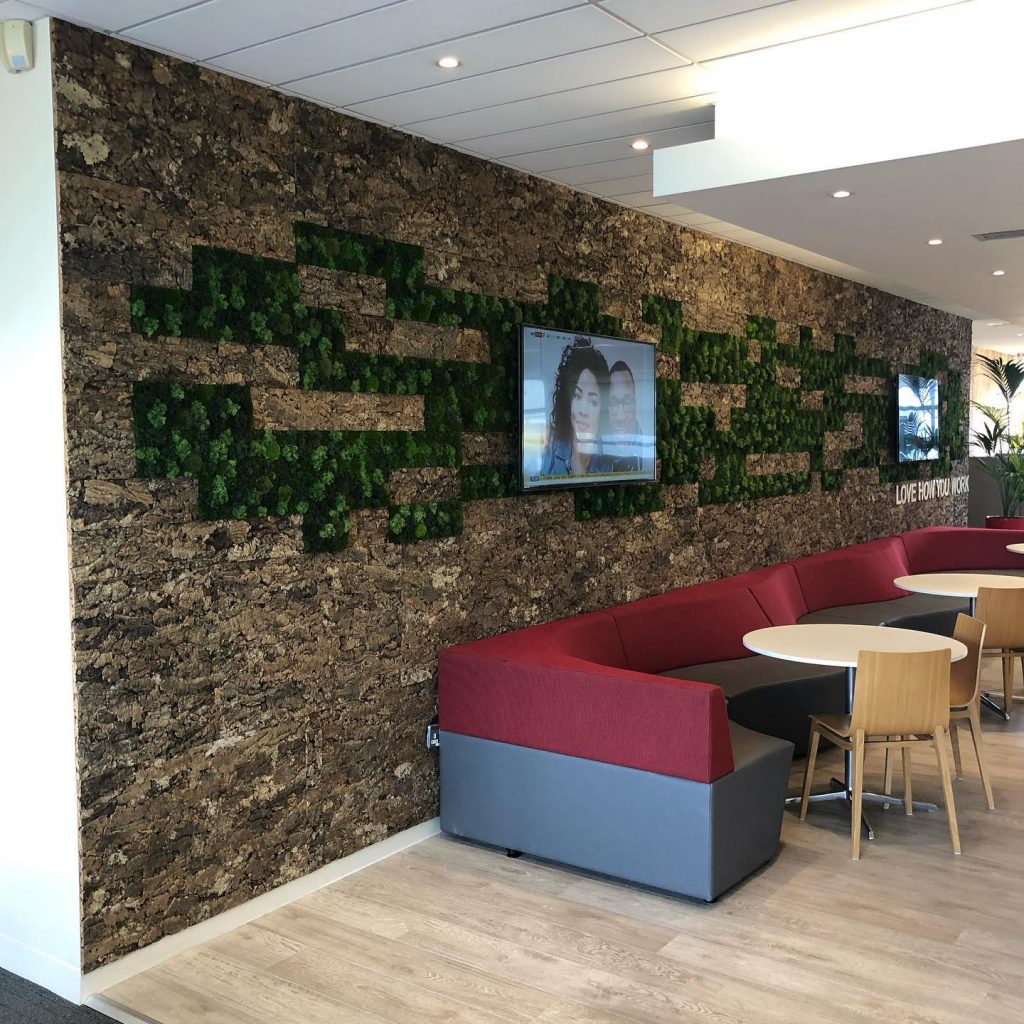What are acoustic panels for walls and how do they work?
Acoustic panels for walls are designed to absorb sound waves and reduce noise reflections in a room. They work by using materials that have acoustic properties, such as foam or fabric, to absorb the sound energy and prevent it from bouncing off walls and creating echoes or reverberation.
In today’s fast-paced world, noise pollution has become an increasing concern for businesses. Excessive noise levels can lead to a variety of health issues like stress, hearing loss, and reduced productivity. That is where acoustic wall panels come in. These panels are designed to absorb sound waves and reduce the amount of noise that enters a space. In this post, we will walk you through the science behind acoustic wall panels and how they work.
We will also discuss the health benefits of implementing these panels in your workspace, including reducing noise pollution and improving overall well-being. Additionally, we will share a case study on how McDonald’s can improve their restaurant to reduce noise pollution and improve employee performance. Finally, we will provide tips on why you should implement these panels in your own workspace to promote a healthier environment for your employees.
Understanding Acoustic Wall Panels
The purpose of acoustic panels is to improve the acoustics of a room by managing and decreasing undesirable noise. These panels come in different colours and designs, serving both acoustic and aesthetic purposes. Their main goal is to minimise reverberation and echo, resulting in clearer and more pleasant sounds in the space.


The Basic Science of Acoustics
Sound travels in waves, and when these waves hit a surface, they can either be absorbed, reflected, or transmitted. Hard surfaces, like walls and ceilings, tend to reflect sound waves, leading to echoes and increased reverberation times. This is where acoustic panels come into play.
How Acoustic Panels Work
Acoustic panels are typically made from porous materials that can trap sound waves. When sound waves enter these materials, they cause the material’s fibres or particles to vibrate. This vibration leads to friction among the fibres or particles, which in turn converts the sound energy into heat energy. This conversion of sound energy to heat is what causes the sound to be absorbed and not reflected back into the room. The more porous a material, the more effective it is at absorbing sound.
The effectiveness of an acoustic panel is often measured using a coefficient called the Noise Reduction Coefficient (NRC). The NRC is a decimal value between 0 and 1, representing the percentage of sound the panel absorbs. For instance, an NRC of 0.8 means the panel absorbs 80% of the sound hitting it and reflects 20%.
Acoustic Wall Panels and Health Benefits
The use of acoustic wall panels helps to enhance overall well-being by reducing noise pollution and creating a serene environment that encourages relaxation and concentration. Additionally, these panels contribute to increased productivity in the workplace by minimizing distractions and providing health benefits such as reduced stress levels and improved ability to focus, ultimately creating a comfortable space for mental well-being.
Reducing Noise for Better Well-being
Acoustic panels make a quiet space, benefiting health. They lower noise and improve comfort, enhancing calmness and clear thinking. Sound-absorbing panels help to create a healthier and less stressful space, which positively impacts well-being.
Why Acoustic Panels are Essential for Architects and Engineers

Architects and engineers must have a deep understanding of the scientific principles of acoustics to effectively design spaces, particularly in settings where clear sound is crucial, like theatres, restaurants, or open-plan venues. Acoustic panels provide a solution for controlling sound reflections and ensuring that spaces not only have aesthetic appeal but also possess optimal sound quality.
The significance of acoustic panels lies in their ability to regulate and manipulate sound behaviour across different spaces. By absorbing sound and minimizing echoes and reverberation, these panels become indispensable tools for architects and engineers striving to establish well-balanced acoustic environments.
Case Study: McDonald’s Kitchen Noise Pollution
McDonald’s, a renowned fast-food chain, is celebrated for its efficiency and rapid service. Yet, behind the counters in its kitchens, a growing concern regarding noise pollution has emerged. One such device, the buzzer installed by McDonald’s, has been identified as a significant source of noise, producing sound levels that exceed the recommended safety limits.

McDonald’s Kitchen Noise Levels Put Employees at Risk
McDonald’s kitchens are notoriously noisy environments. The sound of fryers sizzling, grills popping, and blenders blending can reach levels of up to 90 decibels (dB), which is well above the Permissible Exposure Limit (PEL) of 85 dB for an eight-hour workday.
Exposure to noise levels above the PEL can cause a number of health problems, including tinnitus, hearing loss, and even cardiovascular disease.
A recent study found that McDonald’s kitchen workers are at a significantly increased risk of developing hearing loss. The study, which was published in the journal Occupational and Environmental Medicine, found that McDonald’s kitchen workers were twice as likely to have hearing loss as workers in other industries.
The study also found that the risk of hearing loss increased with the number of years that a worker had spent working in a McDonald’s kitchen. Workers who had spent more than 10 years working in a McDonald’s kitchen were three times more likely to have hearing loss than workers who had spent less than one year working in a McDonald’s kitchen.
Here are some specific steps that McDonald’s could take to reduce noise levels in its kitchens:
- Install noise barriers and enclosures around noisy equipment.
- Use quieter equipment whenever possible.
- Rotate workers’ schedules so that they do not spend too much time in noisy areas.
- Provide workers with administrative controls, such as limiting time spent in noisy areas.
- Branded acoustic solutions so the design of their restaurants is practical while also keeping their unique branding style.
Medical Evaluations Reveal the Truth
Further medical examinations of the kitchen personnel uncovered additional troubling findings. Occupational Health Physicians identified clear indications of hearing loss in multiple employees, as evidenced by a comparison of audiometry tests conducted before and during their employment, which revealed a significant decline in hearing ability.
The situation involving noise pollution in McDonald’s kitchens serves as a poignant reminder of the paramount importance of ensuring workplace safety and prioritizing the welfare of employees. It also highlights the significance of creating an enjoyable dining atmosphere for customers. Taking proactive steps, such as conducting regular noise evaluations, is crucial in order to prevent similar problems from arising in the future.
Sound Absorbing Panels Ireland: The Impact of Loud Environments in the Irish Hospitality Sector



Constant exposure to loud noise can lead to a variety of health problems, including hearing loss, tinnitus, and stress. In addition to the physical effects, loud environments can also decrease productivity and increase errors in tasks requiring concentration. This is why it is important to consider implementing acoustic panels in your walls to reduce noise levels and create a more comfortable and productive atmosphere. By understanding the science behind acoustic panels and their ability to absorb sound waves, you can make an informed decision about the best solution for your space.
Negative Effects on Staff Wellbeing
Noise pollution is a common problem in most workplaces, with employees being exposed to various sources of noise. These include co-worker conversations, phone calls, and external sounds that filter into the office. According to recent statistics, 65% of employees are affected by office noises while 38% are exposed to co-worker noises and 17% experience noise pollution from phone calls. Constant exposure to excessive noise levels can have adverse effects on an employee’s health, leading to stress, fatigue, and decreased productivity.
Loud noise has been linked to hearing loss, cardiovascular problems, and elevated stress levels. A healthy hearing is the key to a healthy life. Therefore, keeping the noise levels at a manageable level is vital. It is important to ensure that no employee is exposed to excessive noise, as this could lead to hearing loss. The noise level in a workplace is determined by the noise-level meter, which is recommended by the OSHA for measuring noise levels.
Place acoustic absorbing panels into your work area, wall or ceiling to help improve sound quality and reduce noise levels. Increased productivity, lower stress levels, better communication, and a more pleasant workplace are just some of the benefits of excellent acoustics.

Studies on the Impact of Loud Environments
The hospitality sector, encompassing hotels, restaurants, bars, and entertainment venues, is particularly vulnerable to the adverse effects of loud environments. According to the World Health Organization (WHO), excessive noise not only affects the well-being of guests but also has a profound impact on staff, interfering with their daily activities and overall job performance.
A study in the journal Environmental Health Perspectives highlighted that employees in the hospitality sector, especially those working in noisy environments like bars or live music venues, are at an increased risk of heart diseases such as coronary artery disease and hypertension. This is due to their prolonged exposure to high noise levels, which can lead to chronic stress and other cardiovascular issues.
Moreover, research from the University of Michigan has shown that noise pollution in restaurants and bars can significantly impact a guest’s dining experience, leading to decreased customer satisfaction. Guests exposed to high levels of noise reported increased levels of stress and anxiety, which can deter them from revisiting the establishment.
For the hospitality sector, managing noise levels is not just about compliance or aesthetics; it’s a crucial aspect of ensuring the well-being of both staff and guests. Implementing measures like acoustic wall panels can significantly reduce noise pollution, promoting a healthier, more enjoyable environment for everyone.
How do Acoustic Panels Promote a Healthier Workplace?


To promote a healthier workplace, acoustic panels reduce unwanted noise and enhance productivity through their sound absorption capabilities, creating a peaceful environment for employees. With an extensive range of styles and colours to choose from, these panels not only improve sound quality but also add aesthetic appeal to any office or commercial space, allowing you to create a unique style for your workplace.
Acoustic panels for walls are available in a range of colours to suit any room decor. From neutral colours like beige and white to bold colours like red and blue, you can choose the right colour that complements your interior design. These colours not only add aesthetic value but also help improve the acoustics of your room. The panels absorb sound waves, reducing reverberation and echo, and creating a more comfortable environment for work or leisure activities. With a variety of colours available, you can choose the perfect acoustic panel that meets both your style and soundproofing needs.
Conclusion
Acoustic wall panels are not just a design element, but they also serve a crucial role in creating a healthier and more productive environment with accurate noise control. By understanding the basic science of acoustics, we can appreciate how these panels work to reduce noise pollution and its negative effects on our well-being. Studies have shown that constant exposure to loud atmospheres can have a detrimental impact on employees’ mental and physical health. Implementing acoustic wall panels in workspaces can significantly improve the acoustics, promote better concentration, and enhance overall productivity. If you’re interested in creating a healthier workplace environment, get in touch with our experts based in Ballymount, Dublin who can guide you through the process of implementing acoustic wall panels in our showrooms.


